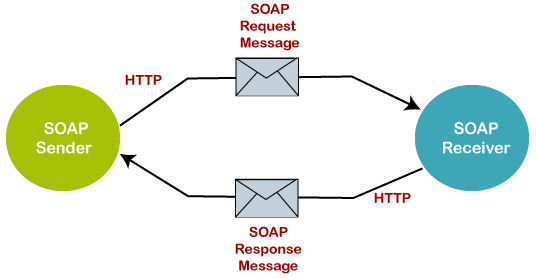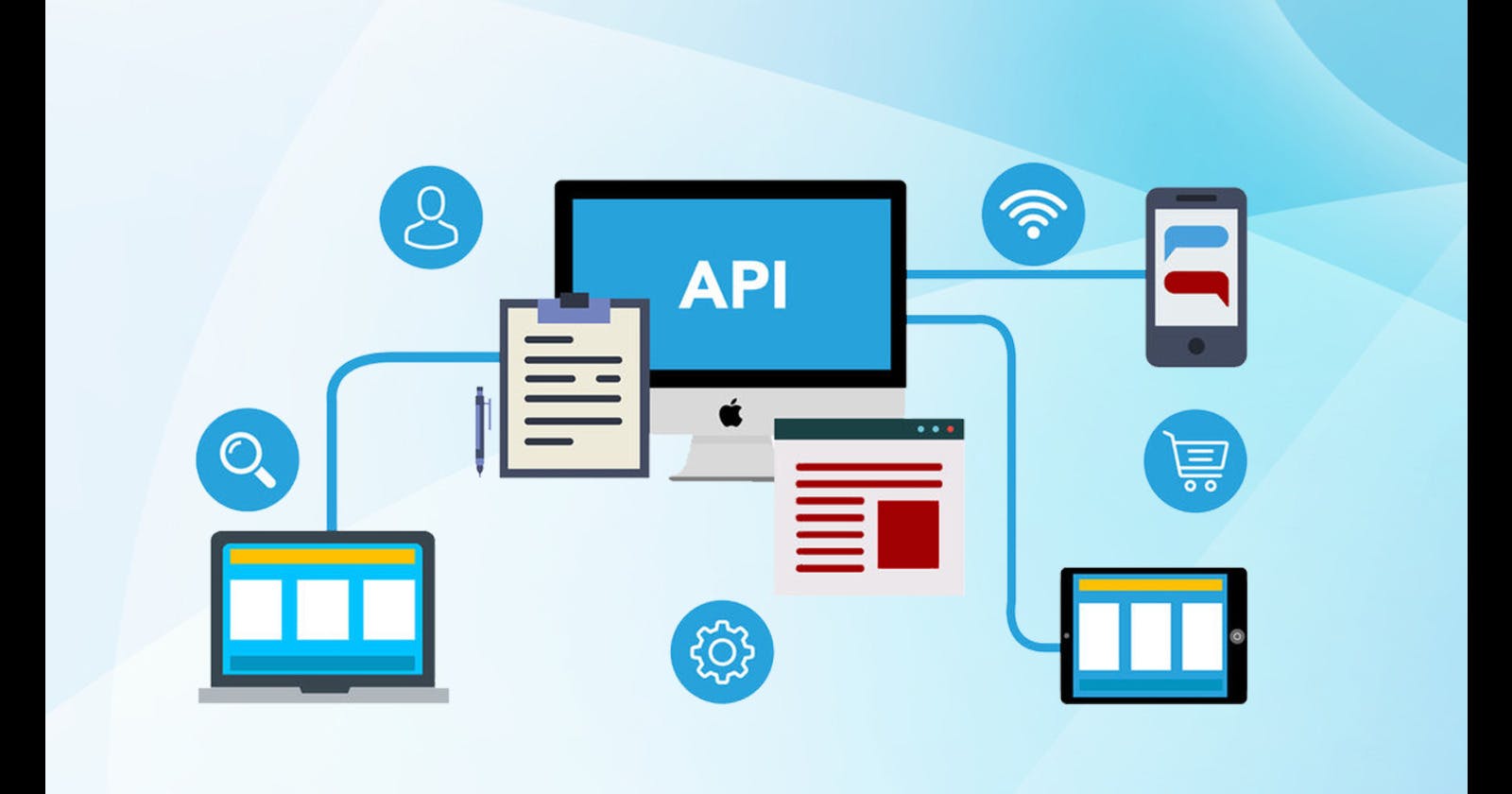Table of contents
- What do you mean by API?
- Variation of API
- What are the benefits of REST APIs?
- What is testing an API?
- How can API documentation be written?
- Classifying API Security.
- What is the management of APIs?
- Expressing The Designing of API
- Thanks for reading my Blog 📖, hope you liked it. Stay tuned for more such amazing blogs🚀🙌
What do you mean by API?
Application Programming Interface is referred to as API. Any software having a specific function is referred to be an application when discussing APIs. The interface can be compared to a service agreement between two programs. This agreement specifies the requests and replies that the two parties will use to communicate. Developers can find instructions in their API documentation on how to format those requests and answers. Using a set of definitions and protocols, APIs are techniques that let two software components interact with one another. For instance, the software system of the crime bureau contains all criminal information. Special forces phone's highly secured app "talks" to this system via APIs to provide you with daily criminal updates.
To put it another way, an API enables you to express your needs to a computer or system so that it can comprehend and carry out your request when you wish to engage with it to get information or carry out a function.
Variation of API
1) SOAP [Simple Object Access Protocol] API
An XML-based system called SOAP (Simple Object Access Protocol) is used to transmit and receive messages over the internet. It is frequently used as an alternative to REST and is primarily utilized for the development of web services.
However, alternative transport protocols, such as SMTP, may also be used to send SOAP messages (Simple Mail Transfer Protocol). An Envelope element, which has a header and a body, makes up a SOAP message.
The actual data being delivered is in the body, whereas the header provides metadata like authentication details.
Web Services Description Language (WSDL) is another tool used by SOAP-based web services to define the actions, or methods, that are offered and how to access them.
A simple Object Access Protocol is used by these APIs. XML is used by clients and servers to exchange messages. In the past, this more rigid API was more widely used.
XML-encoded SOAP messages adhere to the following format:
Envelope: The core element of the message. It ‘envelopes’ the message by placing tags at the start and the end.
Header: It specifies particular extra message needs, like authentication.
Body: This section contains the request or answer.
Fault (optional): This section highlights potential issues that may occur during the execution of an API call or response and provides details on how to deal with them.

2) REST [Representational State Transfer] API
REST is neither a protocol nor a standard; it is a set of architectural restrictions. REST can be implemented in many different ways by API developers.
To execute common database operations like creating, reading, updating, and deleting records (also known as CRUD) within a resource, REST APIs interact via HTTP requests.
A POST request is used to create a record, a DELETE request is used to delete one, and a GET request is used to obtain a record from a REST API. Calls to APIs can utilize any HTTP method.
A well-designed REST API resembles a website that is accessible by HTTP and is shown in a web browser. REST is neither a protocol nor a standard; it is a set of architectural restrictions. REST can be implemented in many different ways by API developers.
REST requests typically contain the following essential elements:
The HTTP method: This describes the four fundamental operations that can be performed on a resource: POST (create a resource), GET (retrieve a resource), PUT (change a resource), and DELETE (delete a resource).
Endpoint: This component includes the unified resource identifier (URI) used to find the resource online. The most popular kind of URIs are URLs.
Header: This component contains information about the server and the client. Similar to SOAP, REST headers can be used to contain authentication information including API keys, server IP addresses, and response formats.
Body: The server's additional information, such as missing or updated data, is contained in this component.

What are the benefits of REST APIs?
REST APIs offer four main benefits:
1) Inclusion
New apps are integrated with current software systems through APIs. Because each functionality doesn't need to be created from scratch, development time is sped up. APIs can be used to benefit from preexisting code.
2) Creativity
With the introduction of a new app, entire industries can shift. Businesses must act swiftly and facilitate the quick rollout of innovative services. Without having to completely rewrite the code, they can accomplish this by making adjustments at the API level.
3) Development
Businesses have a special opportunity thanks to APIs to satisfy the needs of their customers on several platforms. For instance, the maps API enables the integration of map data into websites, Android, iOS, etc. By employing either free or paid APIs, any company can grant similar access to its internal databases.
4) Easy to maintain
A gateway between two systems is created via the API. Each system is required to implement internal adjustments to ensure that the API is not harmed. In this manner, any upcoming code modifications by one party won't affect the other side.
What is testing an API?
Similar to other software testing approaches, API testing strategies are also used. The verification of server answers is the major priority. API testing consists of:
Making several queries to different API endpoints to measure performance.
To verify business logic and functional accuracy, write unit tests.
Simulating system attacks to test security.
How can API documentation be written?
The API management approach includes the creation of thorough API documentation. API documentation can be created manually or automatically using tools. Among the finest practices are:
Writing explanations in clear, understandable English.
Tools can produce lengthy documents that need editing.
Coding examples are used to describe the functionality and preserve the documentation to keep it correct and current.
Writing in a beginner-friendly manner addresses any issue that an API may assist users with.
Classifying API Security.
Most likely, you don't keep your savings under your bed. The majority of people retain their money in a secure location (the bank) and employ different techniques for payment authorization and authentication. Security for APIs is similar. A trustworthy environment with authentication and permission policies is required.
The usage of tokens, encryption, signatures, quotas and throttling, and an API gateway are some of the best practices for API security. But the most crucial factor in API security is effective API administration.
What is the management of APIs?
To be able to adapt quickly to changes in client needs, organizations are putting systems in place to manage their APIs. The recommended approach for synchronous communication amongst microservice architectures is now HTTP-based APIs. These APIs serve as the connecting thread between each microservice.
Since some services could need different security standards than others, managing these APIs enables an organization to ensure that the APIs are utilized by corporate policy and permits control by suitable degrees of security.
Expressing The Designing of API
Application programming interface (API) design is the process of creating APIs that expose data and application capabilities for use by developers and users. Modern businesses depend on APIs because they give their processes, products, and even partnership strategies new capabilities. It is now obvious that the majority of organizations do not consider whether to participate in API programs.
